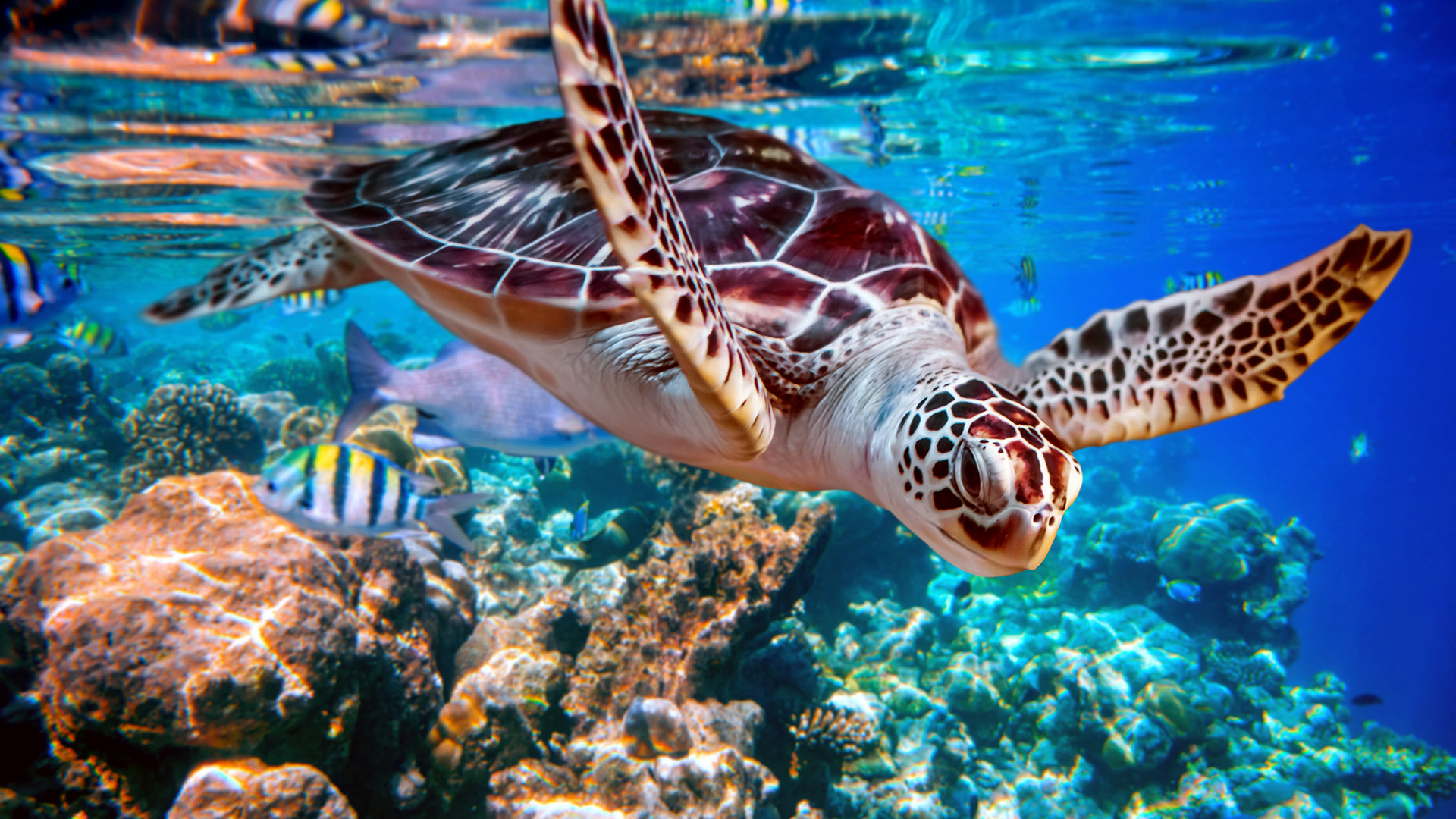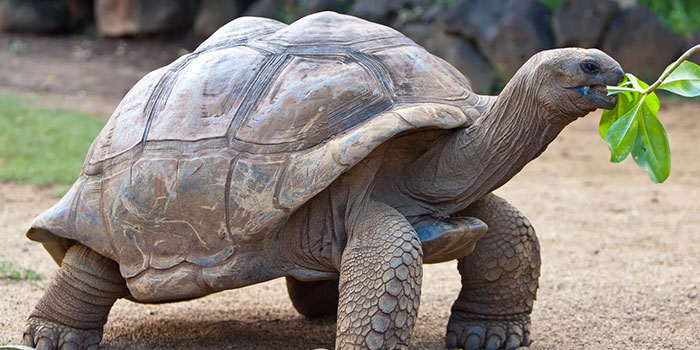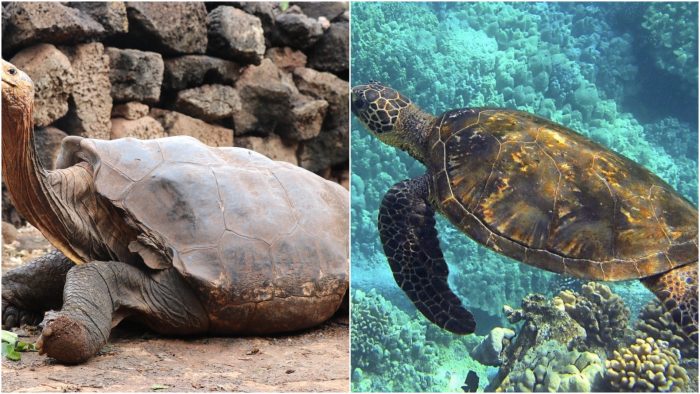Tortoises are often believed to be the same as turtles, but it is important to note that not all turtles are tortoises. In most cases, the term turtle is used to refer to any reptile bearing a large shell on the back, but this is far from the truth. A turtle and tortoise are quite unique in their own rights. Though they have so many similarities as both belong to the same family, there is still a plethora of differences between them. An untrained eye may classify them under one name, but closer scrutiny of their feet, claws, habitat, and shape will tell which one is a tortoise or a turtle.
Table of Contents
Turtle and Tortoise: Brief History
Both the turtles and the tortoise are reptiles, even the terrapins that are their closest cousins. They are all called chelonians as the trio belongs to the taxonomic order known as Testudines, however, they are in separate classification families. So many similarities exist among these close cousins, including the fact that they bring forth their young through laying eggs.
The duo both have their bodies protected by a hard shell, the topmost part of that shell is known as carapace while plastron is the name for the shell’s lower part. There is an attaching bridge between the two parts, meaning that, both reptiles can withdraw their limbs head from their shell. However, it will never be possible for them to detach their entire body from the shell. Both chelonians are known to be shy and reclusive by nature. Note that the visible parts of their bodies are covered in scales. Chelonians can survive anywhere, backyard creeks and deserts.
Now, the question is why do their names differ. Those names are used to differential one species of the chelonians from the other along the lines of their territory, how they live their lives, their eating habits, life expectancy, and many more. These reptiles come in varying sizes; some are quite small while many of them can grow as large as 817 kilograms or 1,800 pounds in body mass.
Differences Between a Turtle and Tortoise
They may share a lot of physical attributes but a closer look at the turtle and tortoise will reveal some striking differences, including;
Ecological Distribution
While the sea turtles are predominant in America and the black continent of Africa, their cousins the tortoises are widespread in both Africa and Asia. The turtles require a warmer outdoor temperature to maintain appropriate body warmth, thus, they thrive in the tropics and climates that are semi-tropical in nature.
However, there are turtles that are known to hibernate during the colder seasons – these turtles take up residence along the riverbanks. As for the tortoises, they don’t have the need to hibernate since they live in places that are almost completely warm. However, there are still some species that can reduce their metabolism when there is food and water scarcity.

Differences in Habitat
The turtle is more at home in the water, thus most of its time is spent in water, but the tortoise is typically a land dweller. However, both reptiles prefer the ground for laying their eggs. The female digs a burrow to lay from two eggs to a dozen. The incubation period for the hatchlings is 90 to 120 days and their incubation is accomplished without any impute from the mother. At the completion of incubation, the hatchlings will dig their way to the ground surface.
While the little turtles strive to survive on their own, the female tortoise comes to the rescue of her hatchlings, providing care and protection for the next 80 days before they will be considered mature enough to strike out on their own.
Differences in Nutrition
Turtles are considered omnivores as they eat animals and veggies. The type of animals they feed on are the smaller ones like insects, jellyfish, and earthworms. Conversely, tortoises are herbivorous in nature, surviving on a plethora of vegetables such as grasses, fruits, and flowers. There are species of tortoise that consume over 200 varieties of plants all through the year.

The Reproductive System of a Turtle and Tortoise
Turtle eggs are more like the eggs from other reptiles, leather-like and soft. The hatchlings incubate for 90 to 120 days. On the other hand, tortoise eggs are the size of a ping-pong ball laid in burrows dug by the female and incubate for the same number of days.
Differences in Physical Characteristics
While the tortoise’s shell has the shape of a dome with bent sturdy feet under the body, the turtle comes with a streamlined shell flattened to the body. The limbs are close in resemblance to that of a tortoise but it is webbed and equipped with lengthy claws, which the reptile leverages to gain access to riverbanks and grip on floating logs. There are still some species of pig-nosed turtle that have flippers. Telling the difference between the duo can be quite difficult, but one has to pay attention to details to be able to make the right distinction, or else, they might get it wrong. However, once the turtle finds itself in water, it is easily distinguishable.
Tortoise vs. Turtle Shell
Researchers study the shells of these reptiles to gain knowledge of how they live. The flat and streamlined shape of the turtle’s shell aids it in diving and swimming in its marine habitat. On the other hand, the land tortoise is protected from predators by its large and dome-shaped shell. Again, nature made the turtle’s shell lighter – this is so because, a shell as heavy as that of the tortoise will impede swimming speed and again, the lighter shell also prevents the turtle from sinking to the bottom of the sea. The tortoise is comfortable with the heavy shell as it is naturally slow in movement and doesn’t need to go anywhere fast.
Read Also: How To Care For Miniature Goats As Pets
Life Span Of a Turtle and Tortoise
The tortoise has longevity similar to that of humans, living from 60 to 80 years. However, we have seen some of them that exceeded 80 – many lived up to 150 years, but the longest confirmed life span for the species is recorded as 188 years.
On the other hand, the turtle has a common life expectancy ranging from 20 to 40 years. The average lifespan for sea turtles is 60 to 70 years, while they require about 40 to 50 years to attain maturity. Several reports have surfaced claiming that tortoises have survived up to 200 years while in captivity, though it is difficult to confirm the validity of such reports.
However, there are verified cases of tortoises that have exceeded 100 years in captivity, but for them to thrive beyond a hundred calls for a meticulously controlled, nurturing environment. For animals that live in the wild, both reptiles (turtle and tortoise) have relative longevity, perhaps, the presence of their protective shell makes them a bad choice for bigger animals that would want to prey on them.
